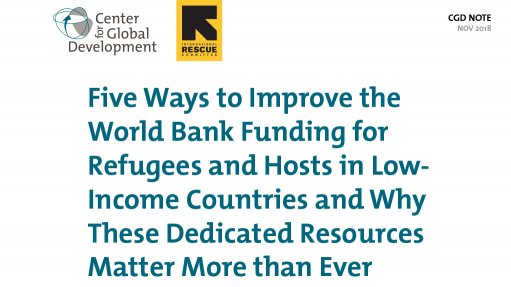
The International Rescue Committee (IRC) and the Center for Global Development (CGD) have been closely following the rollout of the IDA18 sub-window for refugee hosting nations, particularly in East Africa (Ethiopia, Uganda), West Africa (Cameroon, Chad), and Asia (Bangladesh). Drawing on original research and analysis, as well as field visits, this note identifies a few clear successes and areas for improvement. It also outlines recommendations for the implementation of the IDA18 sub-window moving forward, and makes the case for a sub-window in the IDA19 replenishment.
For too long, the international community has accepted the convenient fiction that refugee crises are temporary. In 2016, as waves of refugees came ashore in Europe seeking a life free from violence and conflict for themselves and their children, a spotlight was cast on the hopelessness that exists in even relatively well-funded refugee contexts—where there are few, if any, opportunities for meaningful livelihoods and education—and the very real struggle developing countries face under the strain of hosting large numbers of refugees. This spotlight shined brightest on Jordan, Lebanon, and Turkey, which collectively host more than five million Syrian refugees.
Report by the CGD